The code:
import numpy as np
import tensorflow as tf
import pandas as pd
from sklearn.model_selection import train_test_split
x_data = np.linspace(0, 1000, 100000)
y_true = np.square(x_data)
y_true += np.random.randn(len(x_data))
feature_columns = [tf.feature_column.numeric_column('x', shape=[1])]
estimator = tf.estimator.DNNRegressor(feature_columns=feature_columns, hidden_units=[2, 2], optimizer=lambda:
tf.train.AdamOptimizer(
learning_rate=0.001
))
X_train, X_test, y_train, y_test = train_test_split(x_data, y_true, test_size=0.3)
input_function = tf.estimator.inputs.numpy_input_fn({'x': X_train},y_train,
batch_size=20, num_epochs=10000,
shuffle=True)
train_input_function = tf.estimator.inputs.numpy_input_fn({'x': X_train},y_train,
batch_size=8, num_epochs=10000,
shuffle=False)
test_input_function = tf.estimator.inputs.numpy_input_fn({'x': X_test},y_test,
batch_size=8, num_epochs=10000,
shuffle=False)
estimator.train(input_fn=input_function, steps=1000)
train_metrics = estimator.evaluate(input_fn=train_input_function, steps=1000)
test_metrics = estimator.evaluate(input_fn=test_input_function, steps=1000)
print('TRAINING DATA METRICS')
print(train_metrics)
print()
print('TEST DATA METRICS')
print(test_metrics)
print()
###
new_data = np.linspace(0, 1000, 10)
input_function_predict = tf.estimator.inputs.numpy_input_fn({'x':new_data}, shuffle=False)
print(list(estimator.predict(input_fn=input_function_predict)))
Gives the following output:
TRAINING DATA METRICS
{'average_loss': 200498430000.0, 'label/mean': 332774.78, 'loss': 1603987400000.0, 'prediction/mean': 0.97833574, 'global_step': 1000}
TEST DATA METRICS
{'average_loss': 197508330000.0, 'label/mean': 332257.22, 'loss': 1580066700000.0, 'prediction/mean': 0.97833574, 'global_step': 1000}
[{'predictions': array([0.9783435], dtype=float32)}, {'predictions': array([0.9783435], dtype=float32)}, {'predictions': array([0.9783435], dtype=float32)}, {'predictions': array([0.9783435], dtype=float32)},
{'predictions': array([0.9783435],....
So to conclude, the loss is huge, because TF predict same value of Y for all X. What is wrong in the code?


